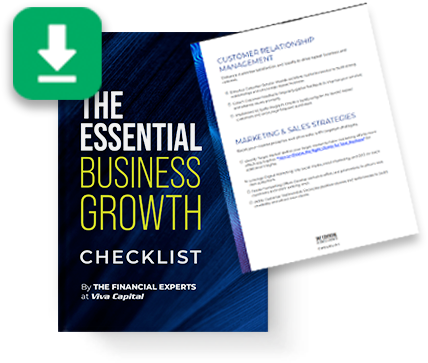
Struggling with payroll management? Most companies do at some point in time or another. Around half the workforce says they’ve experienced issues like late or non-payment and incorrect payments before, according to Workforce Institute. Employers paint a similar picture, with nearly a third of small businesses reporting they don’t always pay payroll on time per Intuit.
We can look at these figures and recognize it’s a problem, but what exactly do they translate to for businesses? Around 40 percent of small to midsize businesses pay IRS penalties for withholding errors each year per SurePayroll. The average penalty is $845. This amounts to $6 billion in employer penalties, according to the IRS.
Employee retention is impacted too. More than two-thirds are living paycheck to paycheck, according to CBNC, so a company being unable to make payments to employees due to payroll errors has a slew of serious ramifications. It’s no wonder that one in six will quit their jobs after a single error, per Intuit polls. About half will start a job search after two errors.
More than 13.6 million American workers have been overpaid as well, according to Workforce Institute research. Unfortunately, you can’t count on them to report it. Their data shows an employee must be overpaid an average of $463 before they speak up. Salaried employees hold off until excess pay hits a whopping $735.
Taking steps to improve payroll management is vital for your company’s financial health and avoiding unnecessary employee turnover, but where do you start? Below, we’ll cover some simple payroll tips and strategies that will help you avoid common pitfalls and strengthen your business at the same time.
1. Get Organized
The first step in improving your payroll management process is understanding exactly where you stand today. Begin by documenting all your payroll processes and performing a payroll audit. A few things to include are:
- How your payroll process works.
- How salaries are decided.
- How wages and promotions are determined.
- How employees are classified.
- Your procedures for addressing payroll mistakes.
- How vacation pay and time off are calculated.
- Any employee reporting responsibilities, such as when W2s must be submitted.
Make note of any deficiencies or complaints you routinely receive, so you can address them as you move forward.
It’s also a good idea to create a payroll calendar. Include the pay periods and payday. Make note of any bank holidays or other events that might slow payments or cause issues so that you can plan ahead.
2. Share Your Payroll Guidelines with the Team
Problems often arise when employees don’t understand the payroll process, how classifications are made, and how you address issues internally. Your processes, as outlined above, should be provided to employees during onboarding, shared internally, and accessible on-demand as needed for these reasons.
3. Keep Up-to-Date with State and Federal Tax Laws
The Fair Labor Standards Act (FLSA) addresses everything from wage standards to equal pay provisions and recordkeeping. Staying on top of it can mean the difference between business as usual and facing hefty penalties.
States may have more stringent requirements on top of the FLSA. For example, employers in California are required to pay their employees extra when payroll comes late or is missed. Employees can sue their employers for failing to meet state guidelines too.
4. Use Payroll Management Software for Process Automation
Little more than half of all small businesses use some type of accounting software, according to Clutch. About a quarter still use pen and paper to track finances, which leaves roughly a quarter leveraging spreadsheets and similar techniques. The lack of technology increases errors and security risks, plus it is downright inefficient.
A modern payroll management system can track hours, time off, and other details while reducing your payroll costs. Automation can ensure you’re not missing important payroll deadlines too. While many small businesses worry about the expense of software, it’s important to note that there are literally thousands of options on the market. Basic versions that offer both payroll and accounting functions are still less expensive than the average IRS fine for withholding errors.
5. Train Your HR and Payroll Departments Continuously
Nearly three-quarters of small businesses have one person handling both HR and accounting functions, according to Clutch. Oftentimes, it’s the accountant who becomes responsible for HR functions. That not only means that the person assuming payroll duties likely has no training in managing payroll to start, but that they may not be tuned into resources that will keep them up-to-date on the latest changes. This increases the risk of costly payroll issues.
Make sure whoever is handling your payroll has adequate training, knows the best payroll practices, and is encouraged to continue their education. Provide your payroll team with learning opportunities or preemptively enroll them in continuing education to help ensure your business stays protected and your payroll strategies are well-organized.
6. Consider Outsourcing Payroll Tasks
Nearly half of all small businesses don’t have an accountant or bookkeeper, according to Clutch research, let alone a payroll specialist. Chances are that your small business does not have an expert handling your payroll.
Furthermore, around 70 percent of small businesses report that payroll taxes are a moderate or significant burden, according to the National Federation of Independent Business. It’s not just paying them that’s the problem. It’s understanding how much is owed and why.
These things create liability concerns but open you up to employee grievances. If proper accounting and payroll software with automation doesn’t get you where you need to go, you may want to consider outsourcing payroll. Again, if you’re concerned about the expense, look at key benefits such as efficiency, labor, and common penalty fees. You’re likely to find that outsourcing is a far more affordable option, plus it reduces your stress and allows you to focus on your business more.
7. Avoid Borrowing from Payroll Tax Funds
Federal Unemployment Tax Act (FUTA) taxes are typically paid quarterly. Federal Insurance Contributions Act (FICA) taxes, which include everything from Medicare to Social Security taxes, plus federal, state, and local income taxes, are usually deposited monthly or semi-monthly.
That leaves many small business owners with a tidy sum just “sitting there” for periods of time. Considering that nearly two-thirds of small businesses have cash flow problems, according to Intuit surveys, it may be tempting to apply some of these funds to cash flow gaps.
If you find yourself wanting to borrow from your payroll tax funds to make ends meet, even if you’re certain you can pay the fund back before tax payments are due, don’t. It’s a risky choice that can land you in hot water with the IRS and leave you unable to pay.
Instead, consider setting up a bank account specifically for payroll and include your taxes in that. This will help you keep the funds separate in your mind too, so you’re less tempted to withdraw funds and will have the cash you need for taxes when it’s time to pay. Explore other ways to improve cash flow and fund business expenses to ensure you’re prepared for periods of high growth and business lulls too.
Payroll Funding Can Help Your Growing Business
Nearly two-thirds of small businesses have cash flow problems, according to Intuit surveys. Business owners say it impacts:
- Business growth.
- Ability to take on new projects.
- Ability to pay payroll.
- And more.
In other words, all these things are tied together by your cash flow. When your cash flow is managed well, you’re in a better position to manage payroll for your small business, take on new projects, and invest in other growth initiatives.
Accelerate Cash Flow and Improve Payroll Management with Invoice Factoring from Viva
Are slow-paying clients impacting your cash flow, hindering your payroll management initiatives, and slowing your company’s growth? Invoice factoring can help. Unlike loans that need to be paid back with interest over time, factoring is like an advance on your B2B invoices that are taken care of when your client pays the invoice. That way, you have cash for payroll or anything else you need and are always moving forward. For more information or to get started, request a complimentary Viva quote.
- How Subcontractor Early Payment Programs Build Relationships - May 29, 2025
- Invoice Factoring Costs: Are They Worth It? - May 2, 2025
- 7 Proactive Tactics for Avoiding Invoice Disputes - March 3, 2025



